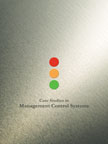Operations Management
 |
Details
Textbook:
Pages : 329;
Paperback;
210 X 275 mm approx.
Workbook:
Pages :
239; Paperback;
210 X 275 mm approx, Sample Applied Theory Questions
Courier charges extra
Pricing
Textbook Price: Rs. 900;
Workbook Price: Rs. 700;
Available only in INDIA
Detail Table of Contents
Click below to view
HTML
Operations Scheduling : Chapter 14
SUMMARY:
Organizations schedule their activities in order to meet customers’ requirements on time and improve their operational efficiency. Scheduling of activities is important for both manufacturing and service firms. An operation can be scheduled in different ways. But they can be broadly divided into forward scheduling, backward scheduling and a combination of both.
|
|
The method of scheduling also varies with the type of operation. Operations managers follow different approaches in scheduling job operations, repetitive operations, and labor-intensive operations. Appointment systems, reservation systems and strategic product pricing are the important approaches in the scheduling of service operations. In service organizations, personnel are scheduled based on the demand requirements. These requirements vary monthly, weekly, daily, or hourly and the scheduling has to be done accordingly. Operations managers can follow several scheduling techniques such as Gantt charts, Johnson’s job sequencing rules, queuing analysis, and the critical ratio method to schedule their operations.



